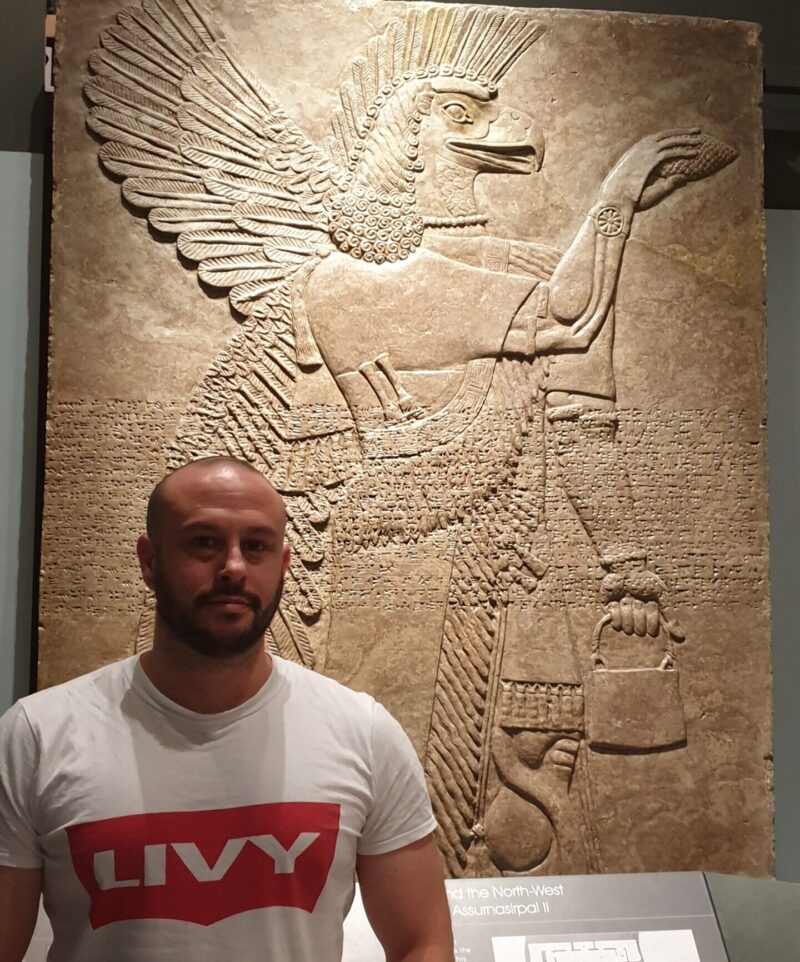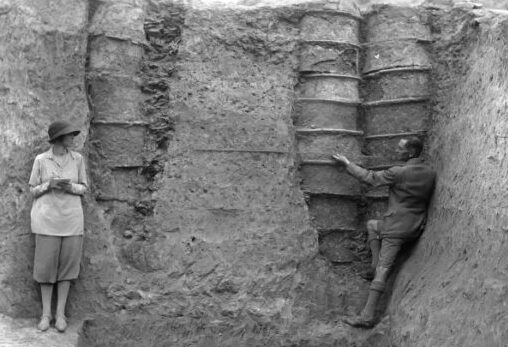Sulak might not be an entity you’d have heard much about but it’s fair to say that he was very much in the mind of those visiting the toilet in parts of ancient Mesopotamia.
Sulak and Mesopotamian mythology.
The Mesopotamian view of the world included a range of what might be considered gods and demons. The word ‘demon’ carries with it a modern connotation, namely something inherently evil. This was certainly the case in some instances for those living in ancient Mesopotamia, for example pregnant women and new mothers might be particularly fearful of Lamashtu, a demon who might predate on new borns and was associated with infant mortality. However, it was another demon, Pazuzu who was appealed to by pregnant women and new mothers to keep Lamashtu away. Such was the nuance within the Mesopotamian belief systems, demons might not always be all that bad. However, Sulak was certainly the type you wouldn’t want to invoke or have anywhere near you.

Neither of us are Sulak, thankfully. This is a Griffin Demon or apkalle.
The lurker in the lavatory.
The location most often associated with Sulak was the bīt musâti or ‘house of rinse water’, what we might term the lavatory or toilet. It’s difficult to consider what toilet facilities were available in ancient Mesopotamia, however, there is evidence of ring drains as early as the 3rd millenium BC. These may have belonged to the more high status dwellings with the poor using chamber pots or simply going outside. If not necessarily a toilet the bīt musâti might have been a central drain area in a house where you could empty the chamber pot and then wash your hands. Whatever the facilities available it would be here that Sulak resided, he didn’t have the epithet of ‘lurker’ for nothing.

The hand of Sulak.
If you listened to my episode on Exorcisms in Mesopotamia as part of my Night of the Livy Dead miniseries you might recall how exorcists were common in Mesopotamia. It was a respected trade and the general idea was that an exorcist might cure you of an affliction. Illnesses and even being in a bad situation could be the work of a ghost, witch or demon and the job of the exorcist was to diagnose the problem, find the relevant entity it was linked to an perform a ritual which could help remove it. In order to do so an exorcist would refer to a central canon, a collection of texts.
This was known as SA.GIG or Sakikkû and featured 40 tablets which was compiled in the mid 11th century BC by a Babylonian scribe called Esagil-kīn-apli. In this collection the symptoms linked to Sulak were the dropping or limpness in the left hand side of the body. The word which was used to describe this condition was mišittu translates as a stroke. Interestingly the toilet was associated with another symptom, epilepsy. Perhaps influenced by the Babylonian diagnosis the Talmud (compiled in the 5th century BC) advised that a man leaving the toilet should wait some time before having intercourse. If he didn’t his children could have epilepsy.
Initially the connection between the toilet and suffering a stroke might seem odd. However, there is a link here. Without going into too much detail straining whilst on the toilet can cause strokes. Take Subarachnoid haemorrhages (SAHs) for example, excessive straining when combined with other factors can cause these. Another type, the ischemic stroke, can also result in weakness on one side of the body. A study dated to 2018 looked into types of strokes occuring whilst on the toilet and in particular whether older adults were more vulnerable. The findings indicated that SAHs were more common generally but that ischemic strokes had been experienced more often by the older patients.
It seems that the Babylonian texts had picked up on a link of people suffering a stroke and having recently been to the toilet. What I find interesting is a further link here, albeit a speculative one. A rule of thumb in antiquity was that the richer you were the better chances you had of making old age (just consider how important a good diet is within this context). The wealthier would presumably have access to exorcists for medical support. Added to this was that being wealthier would have increased you chance of having a bīt musâti. In short the wealthier might have more chance of living to an age where they would increasingly face the chance of suffering from a stroke, the bīt musâti and access to an exorcist to diagnose it. I appreciate this might be stretching things a little, but it’s something to consider.
If you are interested in Mesopotamia then there’s also a recent post I did on moving gods in Mesopotamia. Why not have a read?
Futher reading.
Stol, M. Epilepsy in Babylonia.
George, A.R. On Babylonian Lavatories and Sewers.



